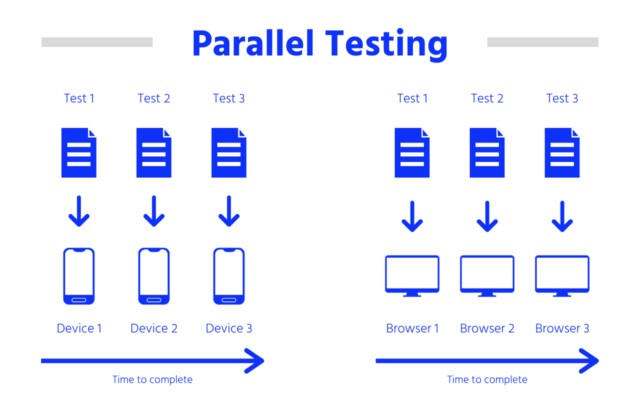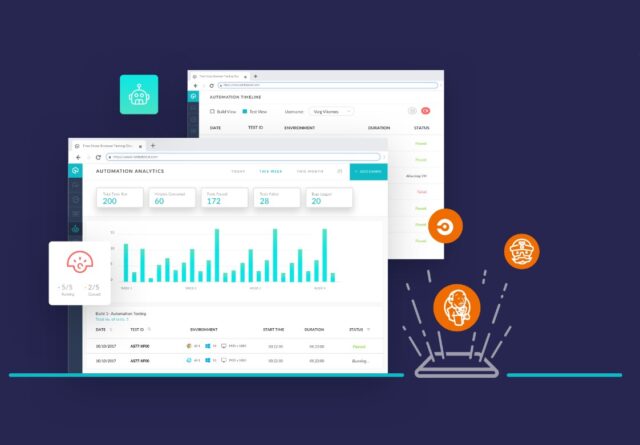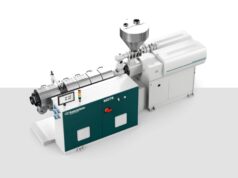
Automation testing is a valuable and indispensable asset in the software development process, providing a multitude of advantages to development teams. Among its benefits are faster test execution, ensuring consistent and reliable results, saving time and cost, boosting overall efficiency, and enhancing bug detection capabilities.
It revolves around employing specialized automation testing tools and software to perform tests in an automated manner, comparing the outcomes with the system’s expected behavior. This approach significantly accelerates and streamlines the testing process, reducing the need for manual intervention, particularly for repetitive test scripts.
What is Automation Testing?
Automation testing plays a critical role in the software testing domain, ensuring that software applications perform as expected and fulfill all specified requirements prior to deployment. By automating selected tests, the testing process becomes more efficient, thereby reducing reliance on manual testers.
It offers a substantial advantage by cutting down on both time and cost while elevating software quality. It streamlines and expedites the laborious and repetitive nature of manual testing, resulting in significant time savings and cost efficiencies. Moreover, automation enables us to thoroughly validate whether the software application functions precisely as intended, ensuring the delivery of reliable and high-performing software product
Factors to Consider Prior to the Selection of Test Cases for Automation

When considering the appropriate timing for automated testing, several factors should be taken into account to make informed decisions:
- Repetitive and time-consuming test cases ─ Tests that involve significant manual work and repetition can be effectively automated to save time and reduce the risk of human errors.
- Crucial test cases for business operations ─ Automation is well-suited for tests that are critical to the smooth functioning of the company. For example, testing the checkout process or the add-to-cart functionality in an e-commerce platform like Shopify ensures a seamless user experience and consistency in execution.
- Complex test cases ─ Automating large test scripts that need to be executed under different network conditions can minimize errors and ensure accurate and reliable results.
- Data-driven tests ─ Tests that require extensive data input and output can benefit from automation, as it ensures the consistency and accuracy of data across multiple test runs. For instance, automated tests can validate data entry actions into application forms, avoiding errors and enhancing result accuracy.
- Stable test cases ─ Tests that operate in a consistent and predictable environment are ideal candidates for automation. Examples include CPU tests that assess the stability and performance of the CPU under varying workloads.
Selecting the right tests for automation is critical to ensuring productive and efficient efforts that bring maximum value to the business. By considering these factors and developing a robust strategy, software development teams can identify the tests best suited for automation, leading to improved testing efficiency and overall software quality.
Exploring the Benefits of Automated Testing With LambdaTest
1. Parallel Testing Across Multiple Platforms

In the realm of web applications, achieving seamless functionality across a diverse array of browsers and their various versions is paramount. To ensure comprehensive test coverage, it becomes imperative to create numerous test cases. However, manually conducting these tests across thousands of browser and operating system combinations can be a daunting and resource-intensive endeavor, potentially resulting in delays in product releases.
To address this challenge, AI-powered test orchestration and execution platforms like LambdaTest offer a powerful solution through their Online Selenium Grid. This grid allows testers to execute automated testing simultaneously on a vast array of real browsers, totaling over 3000+. By leveraging the cloud-based infrastructure, testing can be performed in parallel, significantly expediting the testing process.
The Online Selenium Grid provided by LambdaTest offers a scalable and on-demand infrastructure that ensures optimal performance and reliability. Testers can run automated tests across various browser configurations, including different versions and operating systems, in parallel. This approach not only speeds up the testing cycle but also provides comprehensive test coverage, helping to identify and resolve potential issues across the entire range of targeted environments.
Moreover, cloud-based parallel testing eliminates the need for setting up and managing an extensive local testing infrastructure, saving organizations both time and resources. Additionally, it enables testing teams to access a wide range of browser combinations, even on different devices, without the need for physical setups.
2. Faster and More Efficient Testing
Test automation with LambdaTest empowers testing teams to execute tests with remarkable speed and efficiency, surpassing the capabilities of manual testing. By eliminating the need for human intervention, automated tests run seamlessly, enabling a faster and more streamlined testing process.
The benefits of automated testing extend beyond time-saving. With the ability to run tests frequently and efficiently, testing teams can swiftly identify and address issues and problems at an early stage of the development lifecycle. This early detection enhances the overall quality of the software by preventing potential defects from escalating into critical issues during later stages of the development process.
3. Improve Test Dependability using Auto-Healing by LambdaTest

Enhancing test reliability is crucial for any software development team. Flaky tests and unexpected failures can significantly hamper the testing process, leading to delays and reduced confidence in the product’s stability. Thankfully, with Lambdatest’s Auto-Healing feature, these challenges can be overcome effectively.
Auto-Healing is a powerful mechanism that empowers your test suite to become more robust and dependable. It functions by automatically detecting and recovering from certain failures, eliminating the need for manual intervention. This means that when a test encounters an issue or fails unexpectedly, Auto-Healing steps in to analyze the problem and initiate an automated recovery process.
Auto-Healing enables your test suite to become more resilient and capable of handling intermittent issues that might arise due to varying test environments, network conditions, or even third-party dependencies. As a result, you experience a smoother and more stable testing process, ensuring that you can trust the test results with greater confidence.
4. Improved Accuracy and Consistency
Test automation eliminates human errors that may occur during manual testing, thereby enhancing the accuracy and consistency of test results.
LambdaTest empowers organizations to enhance the precision and consistency of their testing endeavors, resulting in elevated software quality and bolstered confidence in the product’s performance. Automation improves efficiency, productivity, and time-to-market by reducing the need for manual intervention, enabling businesses to deliver high-quality software products faster.
5. Cost-Effectiveness

Compared to manual testing, test automation is a more cost-effective investment than setting up and maintaining it upfront. The time and resource savings achieved through automation outweigh the initial expenses, making it a financially advantageous choice for organizations aiming to streamline their testing processes and enhance overall efficiency.
6. Increased Test Coverage
Test automation with LambdaTest offers a powerful solution to overcome the limitations of manual testing when dealing with repeated and complex test scenarios. In the context of software development, test coverage plays a pivotal role in assessing the confidence level of an application’s functionality and dependability.
However, manual testing has its limitations, especially when dealing with extensive test cases or intricate test scenarios. In such situations, achieving exhaustive test coverage becomes challenging with manual efforts alone.
Automated testing with LambdaTest allows testing teams to execute repetitive and intricate tests efficiently and effectively, leading to a significant increase in overall test coverage. By automating tests, testers can rapidly execute a large number of test cases across various browsers, operating systems, and configurations, providing comprehensive coverage of the application’s functionality.
7. Enables Continuous Testing and Integration

Test automation can seamlessly integrate into continuous testing and integration processes, allowing for continuous feedback and faster software delivery.
Integrating test automation with LambdaTest into continuous testing and integration processes unlocks a range of benefits for software development teams. The seamless integration enables continuous feedback, faster identification and resolution of defects, frequent testing of code changes, parallel test execution for faster results, and comprehensive test coverage.
8. Achieve Test Assurance with LambdaTest SmartWait
With the cutting-edge SmartWait Algorithm, you can now conduct actionability checks with confidence, ensuring accurate execution while minimizing false positives. This revolutionary feature enhances your automation capabilities, streamlines testing processes, and ultimately leads to the delivery of exceptional software quality.
LambdaTest’s SmartWait Algorithm is designed to address the challenges faced during test automation, particularly in scenarios where the response time of web applications may vary. Traditional wait commands might result in false positives when they detect elements before they become fully interactive, leading to unreliable test results.
However, with SmartWait, this problem is effectively mitigated. The algorithm intelligently analyzes the page’s state and waits for elements to be genuinely ready for interaction before proceeding with the test execution. As a result, you can trust that your tests will accurately reflect real-world user experiences and provide reliable feedback on the functionality and performance of your applications.
9. Facilitates Shift-Left Testing

Shift-left testing involves including testing activities earlier in the software development lifecycle to detect errors and issues earlier in the process when they are easier and less expensive to rectify. The development process can be made more productive and efficient by automating tests, which enables developers and testers to build on code faster and identify bugs in real-time.
10. Simplified Regression Testing
Manual regression testing can be time-consuming and lead to issues such as release cycle congestion and uncertainty in test execution. Automating regression testing is a recommended solution to overcome these challenges. With automation tests, the regression testing suite can be run at any time, allowing for flexible scheduling and efficient testing.
Automating regression testing with LambdaTest provides a viable solution to address these challenges effectively. Automation tests can be meticulously designed to cover all critical test cases and scenarios, ensuring comprehensive regression testing. The test suite can be executed automatically, without the need for human intervention, resulting in consistent and reliable test results.
A notable benefit of test automation with LambdaTest lies in its scheduling flexibility for regression tests. Automated tests can be initiated at any preferred time, regardless of working hours, ensuring a continuous testing process without disrupting the development workflow. This adaptability proves particularly advantageous when collaborating with global teams or spanning across different time zones, as it accommodates varying work schedules and facilitates seamless testing coordination.
The ability to run regression tests on demand is a game-changer for agile and continuous delivery environments. Whenever changes or updates are made to the software, testers can promptly trigger the automated regression tests to ensure that all functionalities remain intact. This proactive approach to testing minimizes the risk of regression bugs going unnoticed and promotes a culture of quality throughout the development lifecycle.
Conclusion
LambdaTest’s cloud-based testing infrastructure empowers organizations to achieve more efficient software delivery and maintain a competitive edge in the rapidly evolving digital landscape. Embracing LambdaTest’s automation capabilities allows businesses to achieve a competitive edge by delivering high-quality software products that meet user expectations and withstand the rigors of real-world usage.







